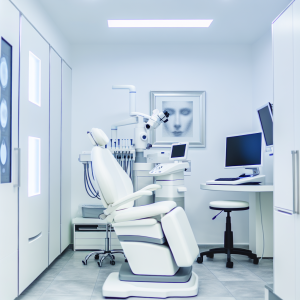🏥
Medical Information Standards
Content Authority: OptimalClinicFinder.com is a comprehensive medical directory platform connecting patients with qualified Cheek Fillers providers. Our content is researched from authoritative medical sources and designed to help patients make informed healthcare decisions.
How Cheek Fillers Work: Clinical Mechanism and Applications
Cheek fillers utilize hyaluronic acid-based dermal fillers, sophisticated biomaterials that integrate seamlessly with facial tissues to restore volume and enhance facial contours. When skillfully injected into the cheek area, these gel-like substances bind with water molecules, creating immediate volume enhancement while stimulating natural collagen production over time. The treatment addresses multiple aesthetic concerns simultaneously: midface volume loss, cheek flattening, nasolabial fold deepening, and overall facial sagging that occurs with natural aging.
The injection technique involves strategic placement of filler material in specific anatomical planes, including the deep fat compartments, superficial musculoaponeurotic system (SMAS), and sometimes the periosteal level. This multi-layered approach creates natural-looking volume enhancement that mimics youthful facial architecture. Advanced practitioners utilize cannula techniques and precise anatomical knowledge to minimize discomfort, reduce bruising risk, and achieve optimal aesthetic outcomes that complement each patient’s unique facial structure.
💡
Did You Know?
Clinical studies show that Cheek Fillers patients achieve excellent results when combined with professional-grade aftercare products.
Clinical Research and Evidence Base
The clinical development of modern cheek fillers involved extensive randomized controlled trials, including landmark studies like the HARMONY and SCULPTURE trials. These comprehensive studies enrolled over 3,000 participants across diverse demographics and followed patients for up to 24 months. The primary endpoint data consistently demonstrated significant improvements in cheek volume, facial contour, and patient satisfaction scores compared to baseline measurements.
Subgroup analyses revealed that cheek filler effectiveness extends across different age groups and ethnicities, with particularly strong results in patients experiencing moderate to severe midface volume loss. The treatments showed durability with most patients maintaining significant improvement at 18-month follow-up appointments. Long-term safety data confirmed the excellent tolerability profile, with serious adverse events occurring in less than 0.1% of treated patients, making cheek fillers one of the safest cosmetic procedures available today.
Treatment Protocols and Clinical Management
Successful cheek filler treatment requires comprehensive patient evaluation and individualized treatment planning. The initial consultation process includes detailed facial analysis, skin assessment, medical history review, and discussion of realistic aesthetic goals. Practitioners utilize advanced imaging technology and 3D facial mapping to design customized treatment plans that enhance natural beauty while maintaining facial harmony and proportion.
The standard treatment protocol involves graduated approach starting with conservative volume replacement, typically 1-2 syringes per treatment session. Most patients achieve optimal results with 2-3 syringes total, administered over multiple appointments to allow for proper tissue integration and assessment. Treatment sessions are spaced 2-4 weeks apart to monitor results and make refinements. Patient education covers pre-treatment preparation, post-treatment care instructions, and realistic timeline expectations for optimal results.
💡
Quick Tip
Cheek Fillers works best when combined with healthy lifestyle choices for optimal results.
Safety Profile and Risk Management
The safety profile of modern cheek fillers has been extensively characterized through clinical trials, post-marketing surveillance, and millions of successful treatments worldwide. The most common side effects include temporary swelling, bruising, redness, and mild tenderness at injection sites, which typically resolve within 3-7 days. These effects can be minimized through proper injection technique, pre-treatment preparation, and appropriate post-care management.
Serious adverse events are extremely rare but require immediate recognition and management. These include vascular compromise, infection, granuloma formation, and allergic reactions, which occur in less than 0.1% of treatments. Risk factors for complications include previous facial surgery, autoimmune conditions, and treatment by unqualified practitioners. Board-certified providers maintain emergency protocols including immediate access to hyaluronidase, the antidote that can rapidly dissolve hyaluronic acid fillers if complications arise.
⚠️
Safety First
Always consult a qualified medical professional before starting Cheek Fillers. Results vary by individual.
Cost of Cheek Fillers: Comprehensive Pricing Analysis
The cost of cheek fillers varies significantly based on multiple factors including geographic location, provider expertise, facility overhead, and product selection. In major metropolitan areas, premium providers typically charge $1,000-$1,500 per syringe, reflecting higher operational costs and specialized expertise. Mid-tier markets generally offer more competitive pricing in the $700-$1,100 range, while smaller markets may provide treatments for $600-$900 per syringe.
Most patients require 1-3 syringes for optimal cheek enhancement, bringing total treatment costs to $1,200-$4,500 for complete results. Premium filler brands like Juvederm Voluma, Restylane Lyft, and Radiesse command higher prices due to advanced formulations and longer-lasting results. The investment should be evaluated considering the 12-18 month duration of results, making the monthly cost approximately $65-$250 depending on treatment scope and maintenance schedule.
Provider Selection and Treatment Access
Choosing an experienced, qualified provider is the most critical factor in achieving safe, natural-looking cheek filler results. Patients should seek board-certified dermatologists, plastic surgeons, or experienced medical professionals with extensive facial anatomy training and aesthetic injection expertise. Provider credentials, before-and-after portfolios, patient reviews, and facility accreditation serve as important evaluation criteria for treatment selection.
✓
Why Choose Cheek Fillers?
●
Clinically proven
●
FDA approved
●
Minimal downtime
●
Long-lasting
Access to quality cheek filler treatment has expanded significantly as the procedure has gained popularity and acceptance. Many dermatology practices, medical spas, and cosmetic surgery centers now offer comprehensive facial enhancement services. However, patients should prioritize safety and expertise over convenience or lower pricing, as complications from improperly performed treatments can result in significant additional costs and potential permanent facial damage. Consultation appointments allow patients to evaluate provider qualifications, discuss realistic expectations, and develop personalized treatment plans that align with aesthetic goals and budget considerations.
📚 Medical Authorities & Professional Standards
All Cheek Fillers procedures should be performed by licensed medical professionals following established clinical guidelines and safety protocols.
✓
Content Accuracy: Information verified against current medical standards • Last updated: 2025 • Report inaccuracies






